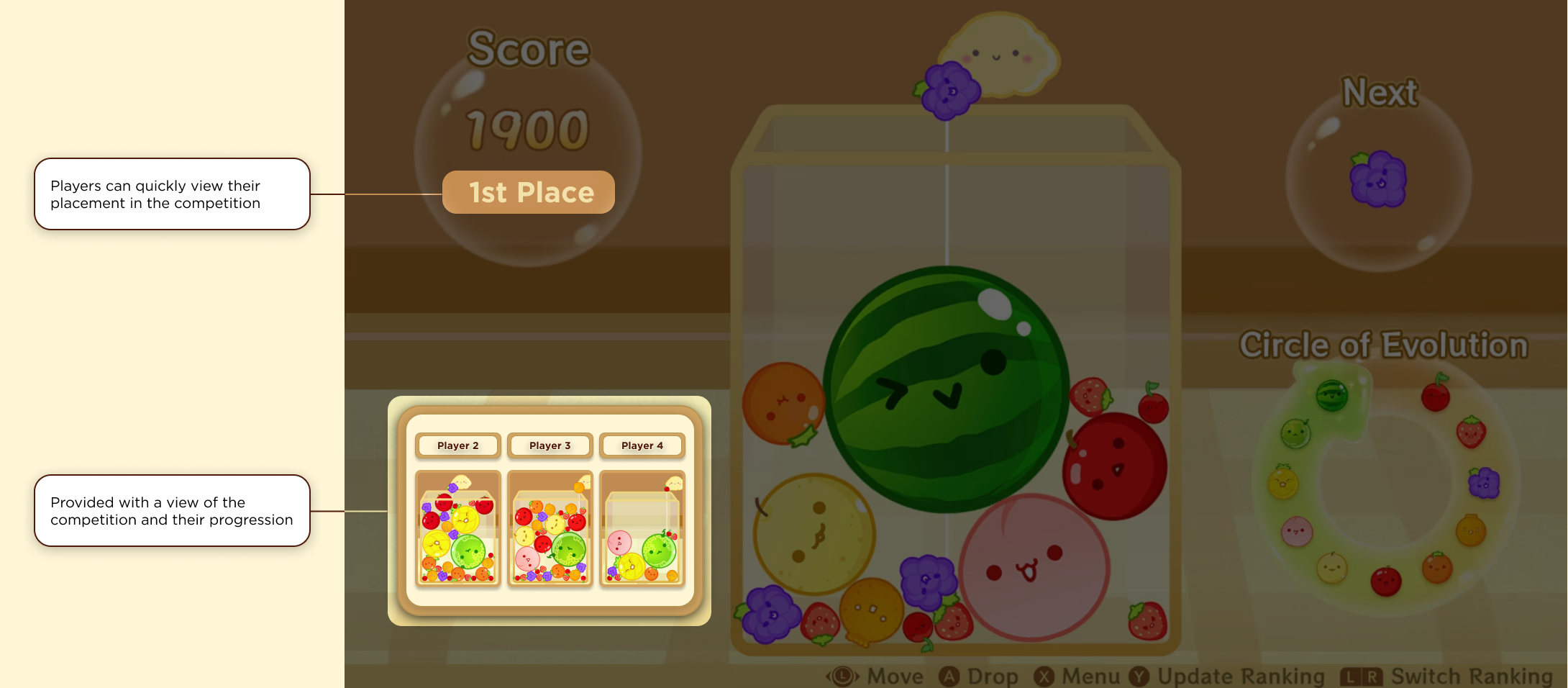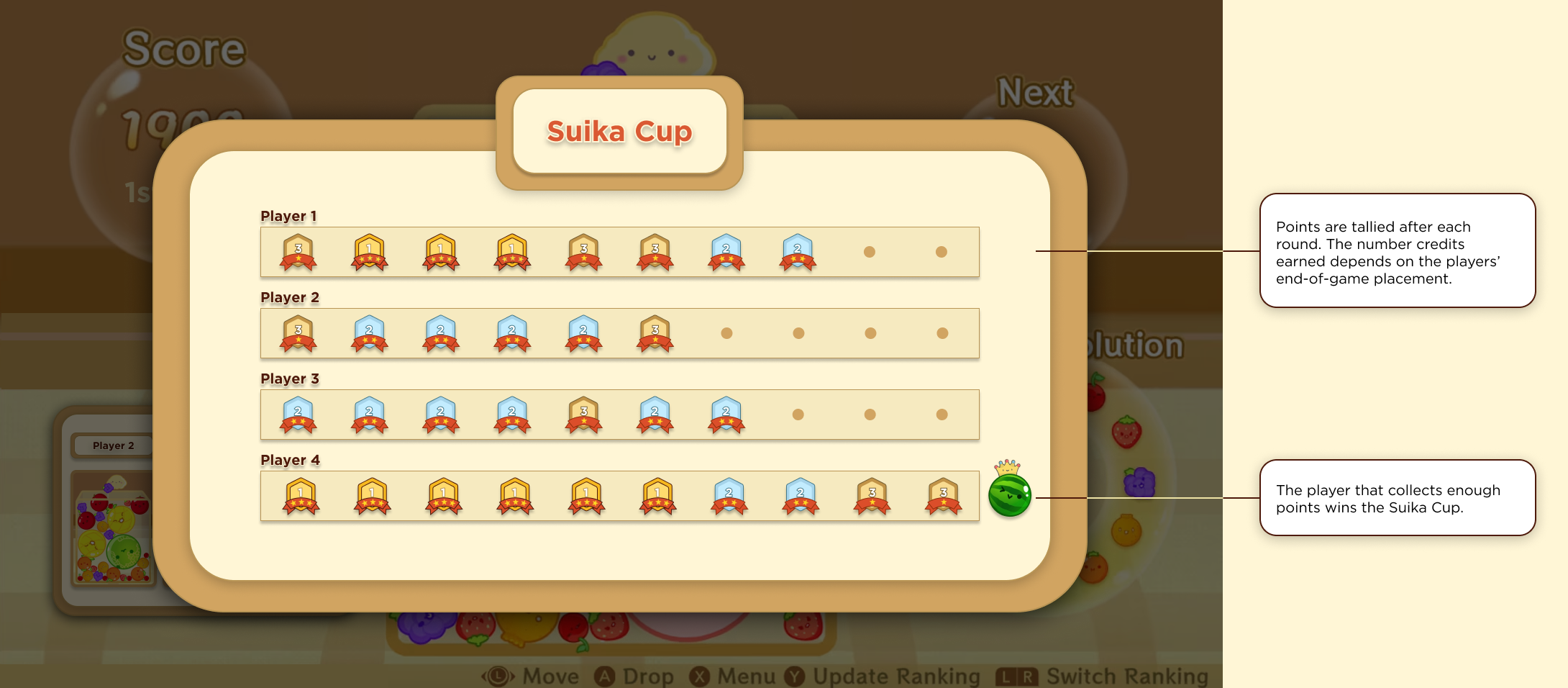FEATURE DESIGN | DEC. 2023
Suika Game
A feature concept for the Suika Game, a video game released for the Nintendo Switch. The feature proposes a multiplayer component that aims to promote a more competitive and social aspect for the game.
Context
A week-long case study.
Contribution
UX/UI Design
User Research
Prototyping





